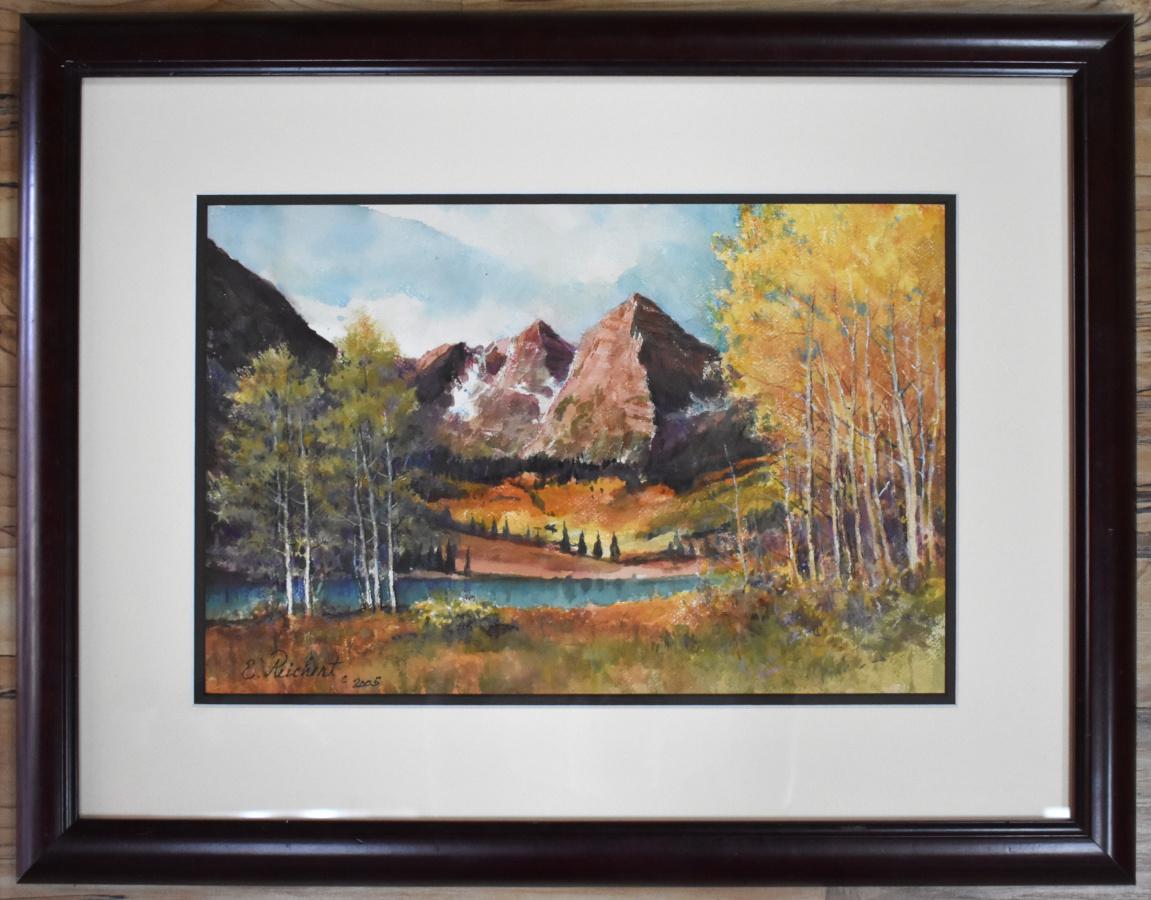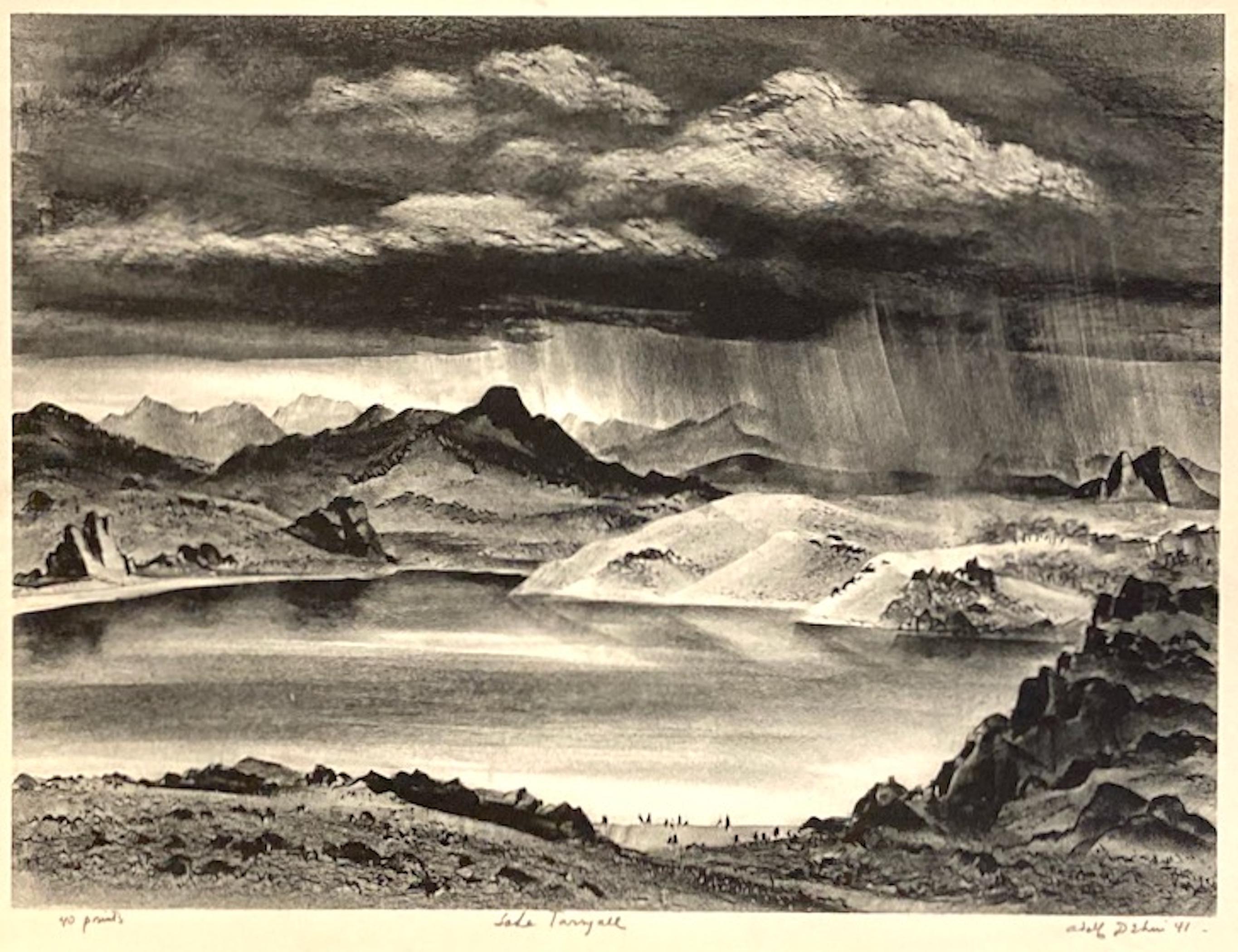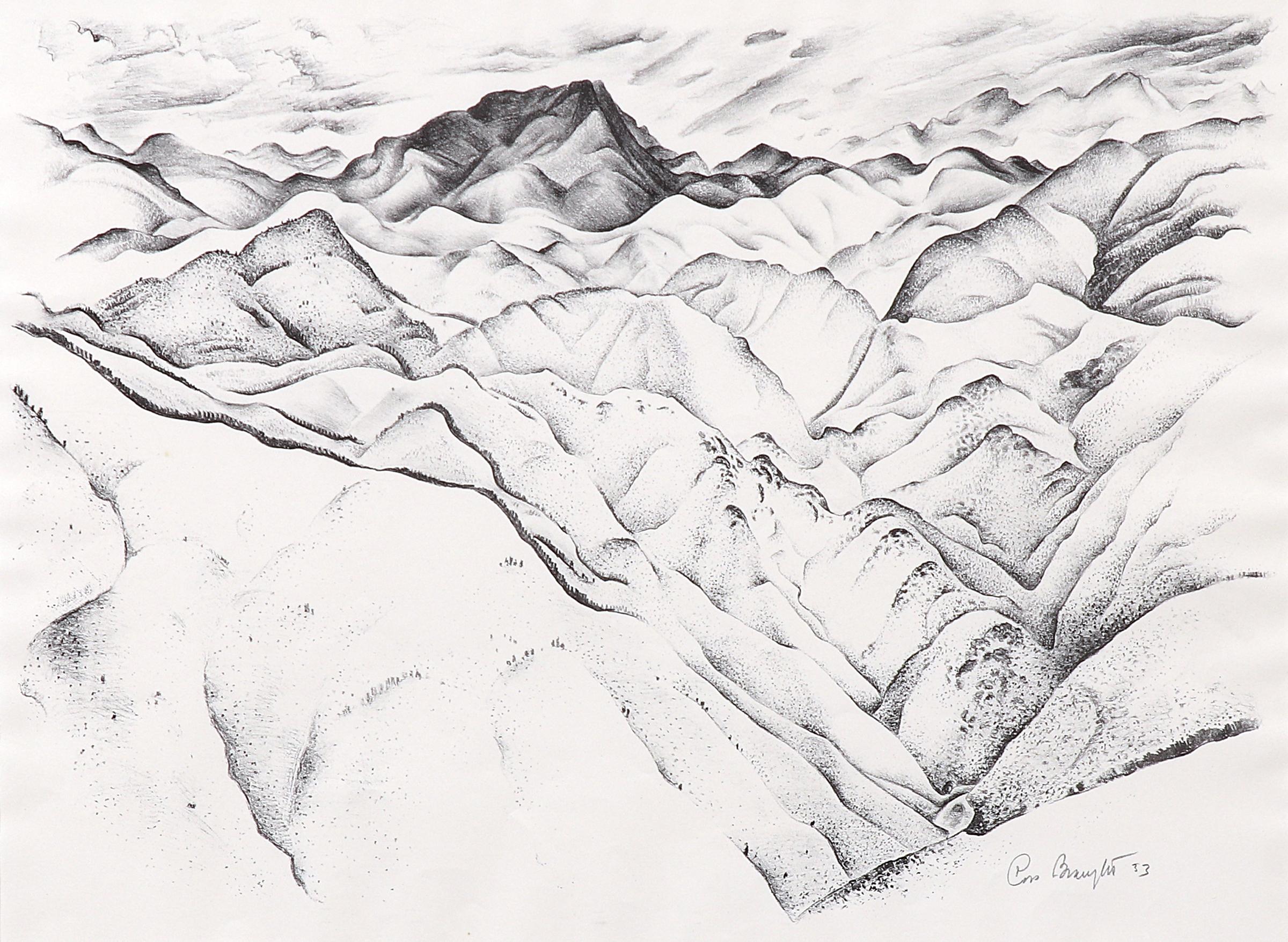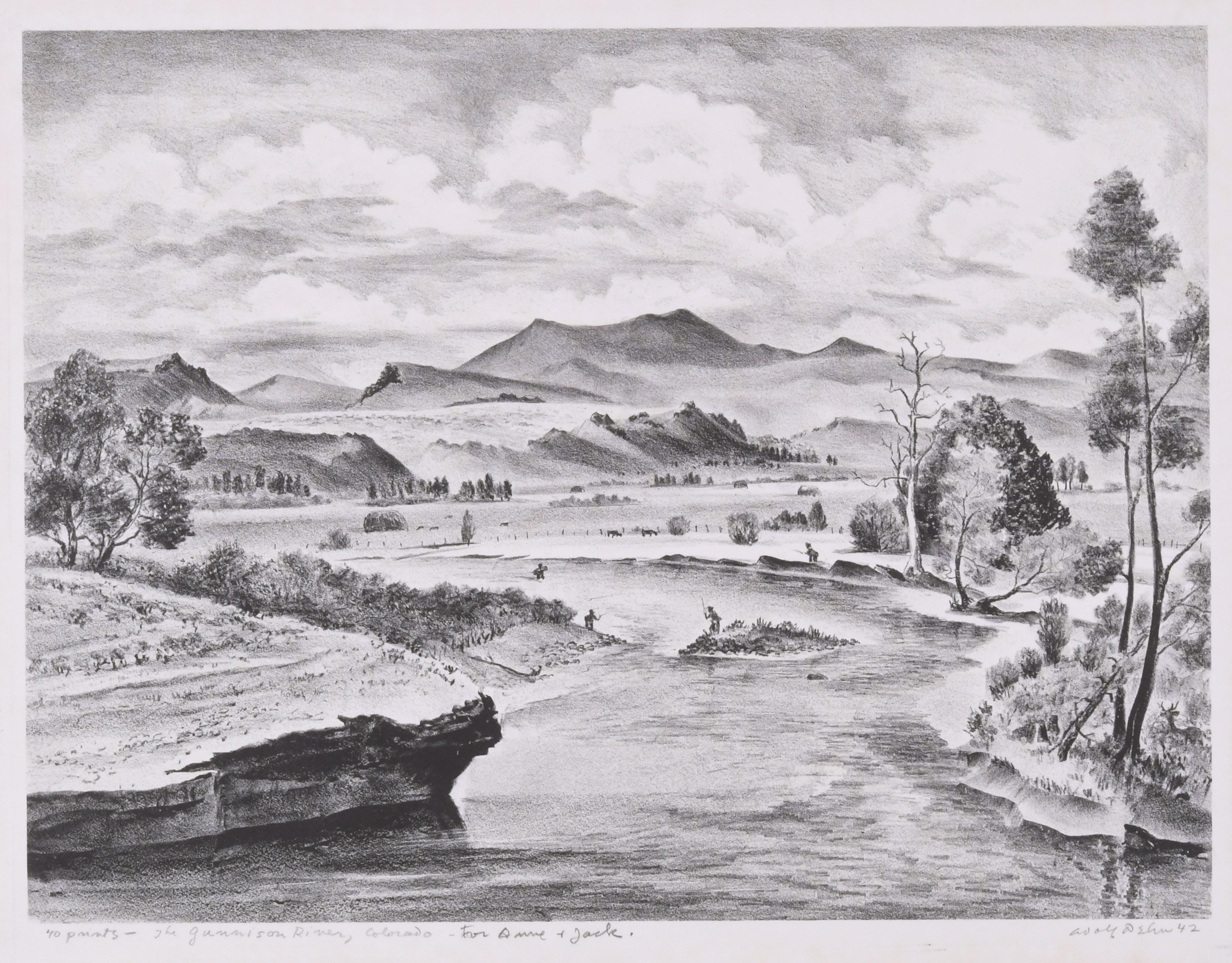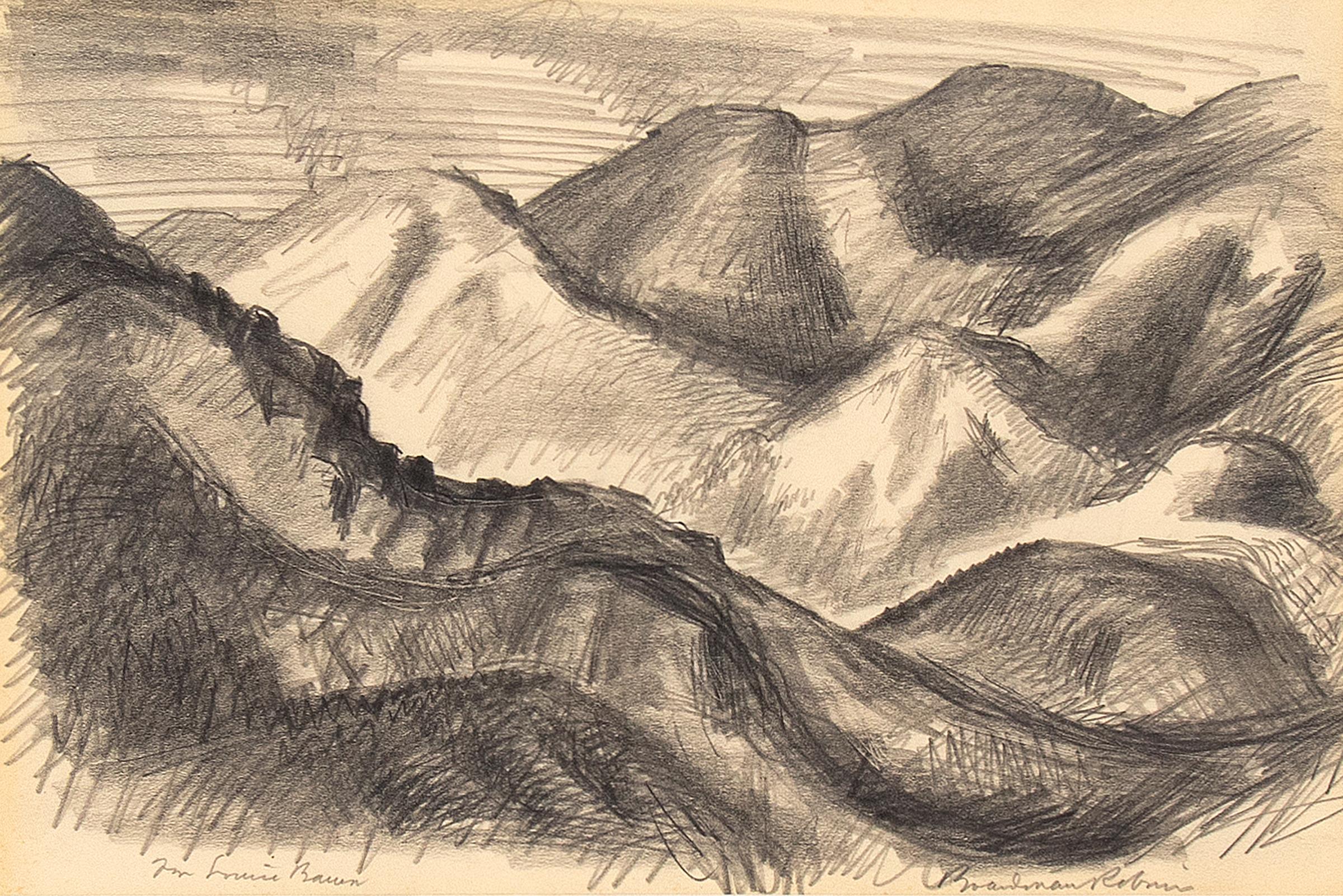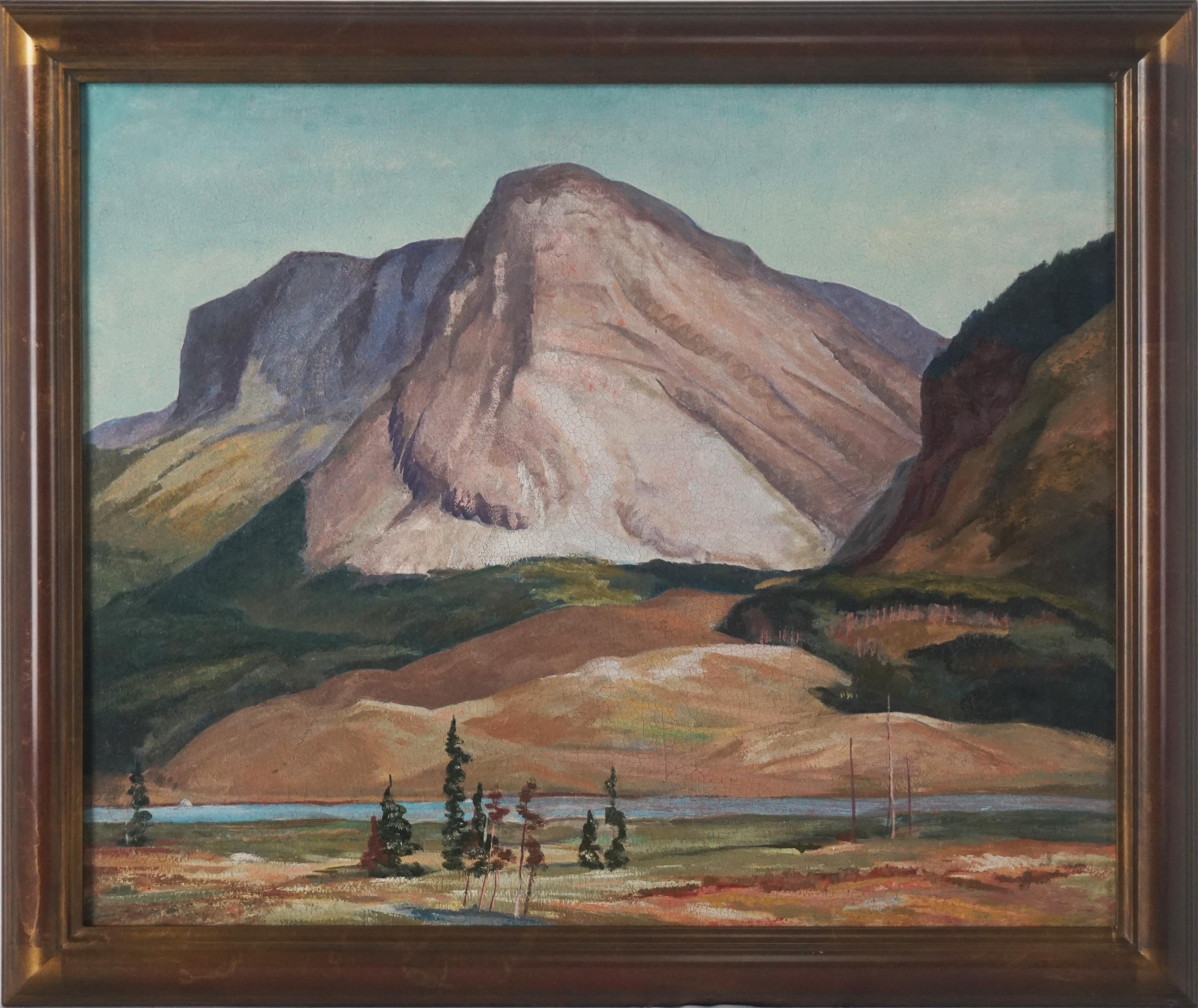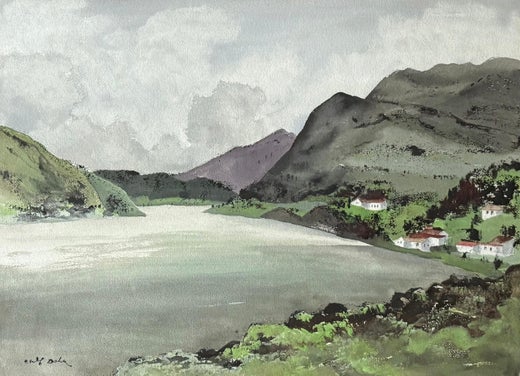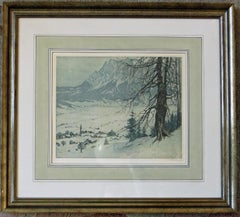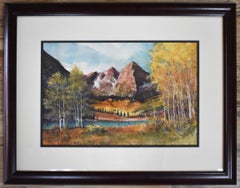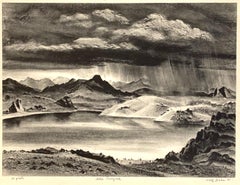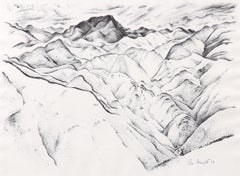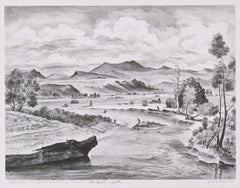Items Similar to Maroon Lake, Colorado
Want more images or videos?
Request additional images or videos from the seller
1 of 13
Adolf Arthur DehnMaroon Lake, Colorado1945
1945
$1,400
£1,082.84
€1,232.75
CA$2,010.17
A$2,196.18
CHF 1,151.02
MX$26,223.05
NOK 14,566.32
SEK 13,582.79
DKK 9,206.70
About the Item
This artwork titled "Maroon Lake, Colorado" 1945 is an original lithograph on paper by noted American artist Adolf Arthur Dehn, 1895-1968. It is hand signed, dated, titled, numbered 18/50 and inscribed "Artist Edition" in pencil by the artist. The image size is 12.5 x 17 inches, framed size is 20.15 x 24.15 inches. Custom framed in a wooden silver frame, with light grey matting. It is in excellent condition.
About the artist:
Adolf Dehn, printmaker, watercolorist, and illustrator, was born in Waterville, Minnesota, in 1895. In 1914 he began studying at the Minneapolis School of Art, and in 1917, the year his first published drawing appeared in the progressive magazine, The Masses, he received a scholarship to study at the Art Students League in New York. There he worked with Kenneth Hayes Miller and was introduced to lithography by Boardman Robinson.
While in New York, Dehn threw himself into liberal politics. Declaring himself a conscientious objector in 1918, he was forced to spend four months in a Spartanburg, South Carolina, boot camp for refusing to serve in the armed forces and eight months as a volunteer instructor teaching painting and drawing at a hospital for war victims in Asheville, North Carolina.
Dehn spent the years 1920 to 1929 in art-related travel in Europe, primarily in Vienna and in Paris, where he made lithographs at the Atelier Desjobert. Throughout this time, Dehn exhibited his work at the Weyhe Gallery in New York and contributed drawings both to magazines abroad and to the radical journal The Masses.
Upon his return to New York in 1929, he became a leading figure in printmaking circles, exhibiting his prints to considerable critical acclaim. In 1937, Dehn had worked exclusively in black and white until 1937—halfway through his career—when he began to work in watercolor. During his summer visits to Minnesota, he created a large body of regional watercolors depicting the lakes and farms of his home state. Lithography and watercolor remained his two primary media, and his subjects ranged from social satire to naturalistic landscapes.
He authored the treatise, Water Color Painting, in 1945 and two other instructional books on lithography and watercolor in 1950 and 1955. From 1938 to 1939 he taught at Stephens College in Columbia, Missouri, and during the summers of 1940-1942 he taught at the Colorado Springs Fine Arts Center.
In 1939 and 1951 Dehn received Guggenheim Fellowships, and 1961 he was elected Full Academician to the National Academy of Design.
Dehn exhibited throughout his career, and his works are in the permanent collections of the Metropolitan Museum of Art, the Museum of Modern Art, the Art Institute of Chicago, the Museum of Fine Arts in Boston, and the British Museum.
Adolf Dehn died in New York City in May 1968 and left behind a vast body of lithographs, watercolors, drawings and prints, which are in the permanent collections of nearly 100 museums across the United States and Europe.
- Creator:Adolf Arthur Dehn (1895-1968, American)
- Creation Year:1945
- Dimensions:Height: 20.15 in (51.19 cm)Width: 24.15 in (61.35 cm)Depth: 0.75 in (1.91 cm)
- Medium:
- Movement & Style:
- Period:
- Condition:
- Gallery Location:San Francisco, CA
- Reference Number:Seller: deh/maro/lak/011stDibs: LU666310312762
Adolf Arthur Dehn
Adolf Dehn, printmaker, watercolorist, and illustrator, was born in Waterville, Minnesota, in 1895. In 1914 he began studying at the Minneapolis School of Art, and in 1917, the year his first published drawing appeared in the progressive magazine, The Masses, he received a scholarship to study at the Art Students League in New York. There he worked with Kenneth Hayes Miller and was introduced to lithography by Boardman Robinson. While in New York, Dehn threw himself into liberal politics. Declaring himself a conscientious objector in 1918, he was forced to spend four months in a Spartanburg, South Carolina, boot camp for refusing to serve in the armed forces and eight months as a volunteer instructor teaching painting and drawing at a hospital for war victims in Asheville, North Carolina. Dehn spent the years 1920 to 1929 in art-related travel in Europe, primarily in Vienna and in Paris, where he made lithographs at the Atelier Desjobert. Throughout this time, Dehn exhibited his work at the Weyhe Gallery in New York and contributed drawings both to magazines abroad and to the radical journal The Masses. Upon his return to New York in 1929, he became a leading figure in printmaking circles, exhibiting his prints to considerable critical acclaim. In 1937, Dehn had worked exclusively in black and white until 1937—halfway through his career—when he began to work in watercolor. During his summer visits to Minnesota, he created a large body of regional watercolors depicting the lakes and farms of his home state. Lithography and watercolor remained his two primary media, and his subjects ranged from social satire to naturalistic landscapes. He authored the treatise, Water Color Painting, in 1945 and two other instructional books on lithography and watercolor in 1950 and 1955. From 1938 to 1939 he taught at Stephens College in Columbia, Missouri, and during the summers of 1940-1942 he taught at the Colorado Springs Fine Arts Center. In 1939 and 1951 Dehn received Guggenheim Fellowships, and 1961 he was elected Full Academician to the National Academy of Design. Dehn exhibited throughout his career, and his works are in the permanent collections of the Metropolitan Museum of Art, the Museum of Modern Art, the Art Institute of Chicago, the Museum of Fine Arts in Boston, and the British Museum, among others. Adolf Dehn died in New York in 1968.
About the Seller
5.0
Platinum Seller
Premium sellers with a 4.7+ rating and 24-hour response times
Established in 1999
1stDibs seller since 2017
864 sales on 1stDibs
Typical response time: <1 hour
- ShippingRetrieving quote...Shipping from: San Francisco, CA
- Return Policy
More From This Seller
View AllConvict Lake, High Sierra
By Earl Graham Douglas
Located in San Francisco, CA
This artwork titled "Convict Lake, High Sierra" c.1920 is an oil painting on canvas by noted California artist Earl Graham Douglas, 1879-1954. It i...
Category
Early 20th Century American Impressionist Landscape Paintings
Materials
Oil
Hoer Dachstein, Austria
By Josef Eidenberger
Located in San Francisco, CA
This artwork titled "Hoer Dachstein, Austria" c. 1960 is an color etching by noted Austrian artist Josef Eidenberger, 1899-1991. It is hand signed in pencil by the artist. The plate ...
Category
Mid-20th Century Realist Figurative Prints
Materials
Etching
Lermoos, Austria
By Josef Eidenberger
Located in San Francisco, CA
Artist: Josef Eidenberger (1899-1991)
Title: Lermoos
Year: ca. 1960
Medium: Color Etching
Plate size: 11.5 x 13.75 inches
Framed size: 22.5 x 24.75 inches
Signature: Signed, lower r...
Category
Mid-20th Century Realist Landscape Prints
Materials
Color, Etching
Evening in Jackson Hole
Located in San Francisco, CA
This artwork titled "Evening in Jackson Hole" 1967, is an oil painting on canvas by noted California artist Bill Shaddix, b.1930. It is signed at the lower left corner by the artist. The canvas size is 18 x 24 inches, framed size is 29.5 x 35.5 inches. Framed in a wooden ornamented gold frame, with green velvet fabric liner and gold color bevel. the artwork and frame are in excellent condition, The velvet liner have two slightly rubbed area, see picture #1 for detail.
About the artist:
Bill J. Shaddix was born in Oklahoma on November 30, 1931. Shaddix grew up in poverty in the Dust Bowl. His family moved to southern California in the 1940s. In 1956 he became the deputy sheriff of Orange County...
Category
Late 20th Century American Impressionist Figurative Paintings
Materials
Oil
Kazakh Steppes
Located in San Francisco, CA
This artwork titled "Kazakh Steppes" 1965, is an original etching on Wove paper by noted American artist Richard Claude Ziemann, b.1932. It is hand signed, titled, dated and numbered...
Category
Late 20th Century American Modern Landscape Prints
Materials
Etching
California Landscape
By Arnold A. Grossman
Located in San Francisco, CA
This artwork titled "California Landscape" c.1990 is a watercolor on paper by noted California artist Arnold A. Grossman, 1923-2016. It is signed ...
Category
Late 20th Century American Impressionist Landscape Drawings and Watercolors
Materials
Watercolor
You May Also Like
"MAROON BELLS" ASPEN COLORADO MOUNTAINS
Located in San Antonio, TX
Edward Lee Reichert
(1919-2011)
Texas Artist
Image Size: 12 x 18
Frame Size: 21 x 27
Medium: Watercolor
Dated 2005
"Maroon Bells" Aspen CO
Biograph...
Category
Early 2000s American Impressionist Landscape Drawings and Watercolors
Materials
Watercolor
Adolf Dehn, Lake Tarryall, 1941 mid-century lithograph of Colorado mountain lake
By Adolf Dehn
Located in New York, NY
Lake Tarryall, a 1941 lithograph by Adolf Dehn (1895-1968) was made while he was teaching in Colorado. A native of Waterville, Minnesota, Dehn attended the Minneapolis School of Art ...
Category
1940s American Modern Landscape Prints
Materials
Lithograph
1933 American Art Lithograph, Clear Creek Canyon by Ross Braught, Colorado
By Ross Eugene Braught
Located in Denver, CO
This striking original lithograph, Clear Creek Canyon I (Colorado), was created in 1933 by acclaimed American artist Ross Eugene Braught (1898–1983). A master of landscape and form, ...
Category
1930s American Modern Landscape Prints
Materials
Lithograph
Trout Fishing on the Gunnison (Colorado)
By Adolf Dehn
Located in Fairlawn, OH
Trout Fishing on the Gunnison (Colorado)
Lithograph, 1941
Signed and dated '42 in pencil lower right
Annotated lower left:
"40 Prints-The Gunnison River, Colorado-For Anne & Jack"
Ed...
Category
1940s American Modern Landscape Prints
Materials
Lithograph
Boardman Robinson “Colorado Mountain Landscape” Modernist Graphite Drawing
By Boardman Robinson
Located in Denver, CO
This original graphite on paper drawing by acclaimed artist Boardman Robinson (1876–1952) beautifully captures the dramatic majesty of the Colorado mountains. With expressive linewor...
Category
20th Century American Modern Landscape Drawings and Watercolors
Materials
Graphite
Mid Century Colorado River Landscape
By Wilfred A. Readio
Located in Soquel, CA
Beautiful mid century impressionist landscape of Colorado River and hills by Wilfred A. Readio (American, 1895-1961), c.1940. Unsigned; purchased as part of collection of artist's wo...
Category
1940s Tonalist Landscape Paintings
Materials
Masonite, Oil
More Ways To Browse
Howard Behrens Giclee
Kiyoshi Woodcut
Lawrence Nelson Wilbur
Lithograph Prints Of Architecture
Merton College
Paris Etching Society
Phil Greenwood
Prints Claude Monet
Vlaminck Signed
Wu Guanzhong
Aaa Sign
Africa Maps By Emanuel Bowen
Alfredo Muller
Antique House Architectural Design
Antique Postcards 1900
Ashley Andrew
Auguste Delatre
Buckels Jim
